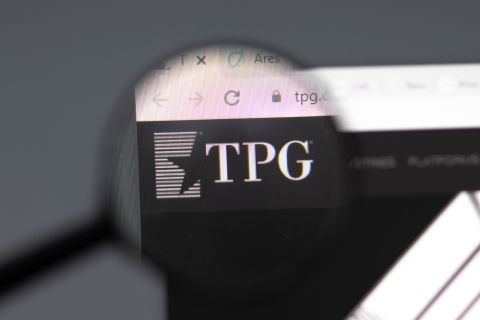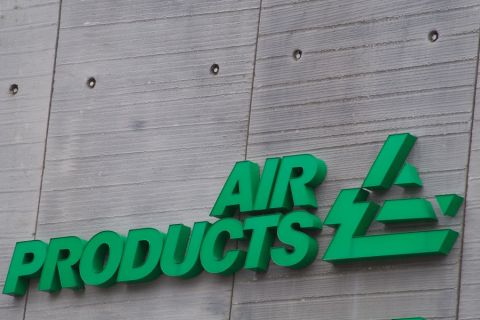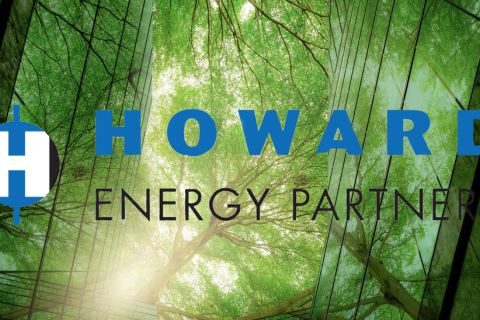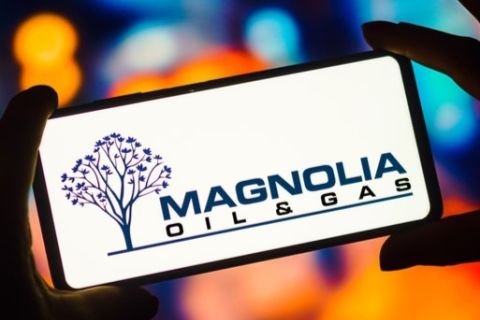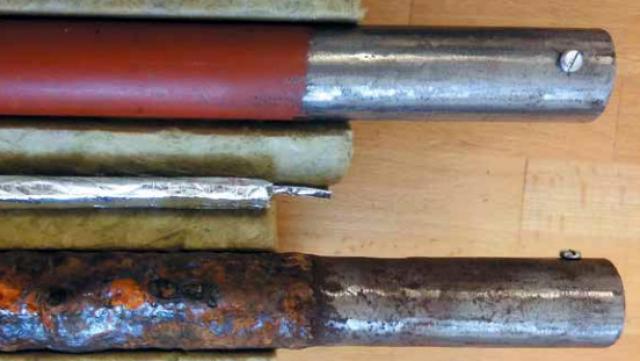
At bottom, a pipe specimen exposed to several months of saltwater corrosion shows some 10% of metal loss. At top, a control specimen used in the trial. (Source: Cosasco)
A joint U.K. and Norwegian consortium has spent three years working together to develop a completely new solution based on Electrical Impedance Spectroscopy (EIS) that provides a solution for one of the biggest global challenges facing the oil and gas sector: the non-invasive detection of corrosion under insulation (CUI).
With this system, there is absolutely no need to remove the outer cladding or underlying insulation, and there is only a need for a single access point to a long continuous pipeline, which means it can very easily be retrofitted onto aging assets.
Other advantages are that:
- It scans very long lengths of insulated pipeline in seconds;
- The sensor network can become a SCADA system and operable from a single location or control center; and
- It will detect both sudden catastrophic leaks and gradual long-term changes as CUI progresses in very large, distributed pipeline networks.
Test results
Presented here are the results of a 15-month long field test of the system, deployed in a real-life setting, on location in Norway.
Conventional methods of non-destructive testing (NDT) for CUI largely rely on the periodic removal of outer cladding and underlying insulation to check visually for corrosion. Such an approach is not cost-effective to perform in real-world deployment environments.
Indeed, they are often too expensive to implement as they generally cover too small an area and inspection speeds are very slow. Moreover, they are usually highly labor intensive, require extensive preparation and often involve shutting down operation.
Hence, there is an urgent need to develop technologies/techniques that enable industry to adopt more cost-efficient and reliable inspection and monitoring methods.
To address this vital industrial need, Inspection Technologies Ltd. (ITL) in the U.K. consulted with plant installation and maintenance company SolidTech AS of Norway, and ITL has now developed, and fully field-tested, a new system based on Electrical Impedance Spectroscopy (EIS), which can continually detect and monitor the progression of CUI in large pipeline networks in industrial settings without the need to physically remove outer cladding or insulation.
The oil and gas sector in particular would benefit greatly from such a technological step-change in inspection technology, as it would enable early detection and preventative maintenance in the large energy sector.
Thus, the need for better monitoring technology is an enormous “market pull.”
Other sectors apart from oil and gas that also greatly benefit from this technology include power generation, food and pharmaceuticals, chemical refineries, paper mills, and infrastructure common to many industrial sectors where pipes are underground or enclosed in concrete.
According to the U.S. National Association of Corrosion Engineers (NACE), the annual cost of CUI across the main production and manufacturing categories is in the billions of dollars per year—in particular some $3.7 billion for refining and $1.4 billion for oil and gas production.
The technology
The EIS system consists of a dispersed network of small and inexpensive transceivers. Each small transceiver has an individual footprint of less than 50 square centimeters. EIS is a powerful and well-established technique for material characterisation that has grown tremendously over the past few years and has made its way into the service environment due to smaller-sized and more portable units.
However, the consortium’s system is the first of its kind be used in full-fledged industrial use.
It differs from conventional lab-based EIS by using an embedded controller and associated circuitry that uses onboard Fourier engines to speed up measurement times by several orders of magnitude. This makes it a commercially viable instrument that is capable of scanning 3-4 kilometers of pipe an hour to non-invasively detect corrosion under thermal insulation.
These small transceivers are easily retrofitted at strategic nodes of a pipeline network, such as junctions, valves, flanges and other places, which are normally free of thermal insulation during day-to-day operations.
All miniature EIS transceivers are integrated via local hubs and routers into a SCADA system and operable from a single control center, and the entire network of pipes is constantly monitored 24 hours a day by specially written corrosion detection and condition monitoring software.
Metal loss
The system specifically identifies metal loss/corrosion only on the outside of pipe at the interface with the thermal insulation.
This highly surface-specific ability to detect corrosion/metal loss only at the outer wall of a metal pipe is of special interest to commercial users as it also means that—unlike some other techniques—the EIS system is totally insensitive to the actual content of the pipeline system itself.
Hence, it only monitors, and tracks, events related to corrosion and maintenance issues directly under the thermal insulation.
Of all the current state-of-the-art methods, which attempt to function in a similar way, only ultrasound techniques have experienced a market take-up of some size. Even for these techniques there is a limited uptake. That’s because of their high cost and the inherent limitations that require partial insulation removal, cover small areas and are only sensitive to quite drastic losses in wall thicknesses rather than smaller metal losses associated specifically with corrosion at the thermal insulation at the pipe wall boundary.
The EIS system reported here has the commercial advantage of being able to continuously monitor entire pipeline systems, being much cheaper and easier to install, with higher sensitivity to shallow surface corrosion. If desired, degrees of corrosion and associated metal loss can be can classified by the system as light, moderate or severe.
Field trials
The aim was to establish the sensitivity of the EIS system, prior to field deployment, to even minimal levels of CUI. The system was able to specifically identify metal loss/corrosion on outside of pipe at the interface with the thermal insulation.
The findings of the lab-based characterization trial were consistent with theory. That is, only metal loss/corrosion on the outermost surface of the pipe was detected by the EIS system and that even mild metal loss/corrosion on the outer surface was readily detectable.
A beta-test of the EIS system was trialled over 15 months on location in Norway to characterize the system in live operation under the demanding conditions of a real-life deployment environment.
This test installation itself consists of a specially constructed closed-circuit system, which continuously circulates high-temperature water through a pipeline network with various degrees of paint system, corrosion protection and thermal insulation. The EIS system is connected at convenient nodes of the pipeline system and provides full real-time streaming telemetry back to a U.K. control and monitoring center.
Over time, a data-based response matrix was created in order to correlate EIS measurement readings with a specific corrosion/maintenance event.
The results
After the end of 15 months, the trial was terminated and the cladding and insulation removed from the pipeline sections. Of special interest was the fact that Section 5 [see photo] was not painted in primer prior to being insulated, whereas Section 7 was.
Upon removal of the cladding and insulation, it was revealed that Section 5 (unprimed) had experienced corrosion and Section 7 (primed) had not.
In fact, early warning signs for Section 5 appeared early in the test and monitoring software was advised of an intervention
In the coming months, it is intended that the system will be deployed in larger facilities and retrofitted onto ageing assets. It will then be possible to characterise the long-term EIS findings by cross referencing readings with specific corrosion/metal loss events.
From there, supported by continued data-collection, it will be possible to produce predictive models and empirical response matrices that characterise the precise nature of the defect/ ROI—whether corrosion, creep, deformation, cracking, etc., occurred.
Roland Anderson is executive vice president of Cosasco.
Recommended Reading
TPG Adds Lebovitz as Head of Infrastructure for Climate Investing Platform
2024-02-07 - TPG Rise Climate was launched in 2021 to make investments across asset classes in climate solutions globally.
Air Products Sees $15B Hydrogen, Energy Transition Project Backlog
2024-02-07 - Pennsylvania-headquartered Air Products has eight hydrogen projects underway and is targeting an IRR of more than 10%.
NGL Growth Leads Enterprise Product Partners to Strong Fourth Quarter
2024-02-02 - Enterprise Product Partners executives are still waiting to receive final federal approval to go ahead with the company’s Sea Port Terminal Project.
Sherrill to Lead HEP’s Low Carbon Solutions Division
2024-02-06 - Richard Sherill will serve as president of Howard Energy Partners’ low carbon solutions division, while also serving on Talos Energy’s board.
Magnolia Appoints David Khani to Board
2024-02-08 - David Khani’s appointment to Magnolia Oil & Gas’ board as an independent director brings the board’s size to eight members.

